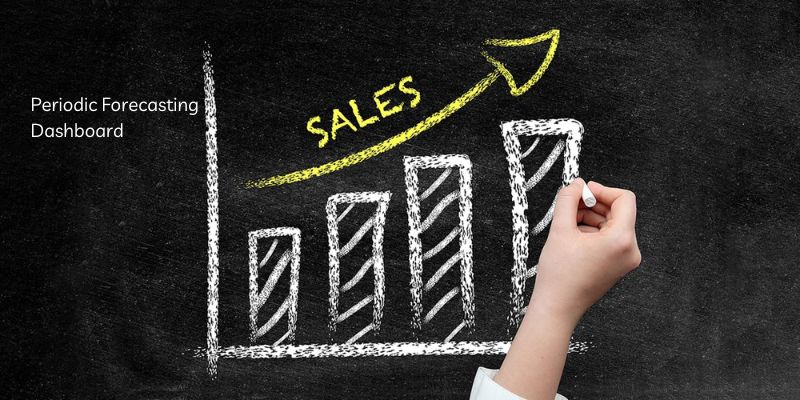Sales performance dashboards are crucial tools that give insightful information about how well a company’s sales staff is performing and how much income they are generating overall. These dashboards compile and display important sales metrics and data, enabling sales managers and teams to track developments, spot patterns, and take well-informed decisions to spur growth and meet objectives. Sales performance dashboards provide an in-depth picture of the sales process and point out areas that need improvement or attention by measuring data like sales revenue, conversion rates, lead generation, and customer acquisition costs. This article will examine the topic of sales performance dashboards.
What makes Sales performance dashboards crucial?

Because they have a limited amount of time, salespeople need information that allows them to rapidly get a comprehensive picture of their deals and readily delve further into any individual data point. Because a CRM platform has the data they need to close deals, sellers spend the majority of their time using it. However, it might be challenging to have an accurate, comprehensive picture of an account because account facts frequently become buried on numerous displays.
Sales dashboards let sellers spend more time selling and less time on clerical work or looking for the data they require. Cleaning up and analyzing CRM data is a difficult operation for sales analytics teams; exporting data from a CRM source system is labor-intensive and time-consuming, and ad hoc analysis of an account is practically impossible. Data exported from a CRM application frequently has a constrained scope of information, becomes static and out-of-date right away, and is left in an unviewed spreadsheet.
The argument for central, self-service dashboard creation by sales analytics teams is strong. Everyone will be using the same data to make decisions if sales dashboards are centrally located, and these reports will act as the only reliable sources of information. Senior leaders, sales managers, and sellers would all use the same terminology and aim for the same sales KPIs. By using a single source of truth across all departments, important choices are made using facts rather than just intuition.
You’re better prepared and never caught off guard when you use reports linked to real-time data sources with accurate and validated sales data, which makes everyone in the company more adaptable and enables them to seize chances or hit quotas more rapidly.
What characteristics distinguish a great Sales performance dashboards?
Focus on your audience and consider the KPIs that are pertinent to this audience in order to start creating effective sales dashboards that your sales team will use. Before you get started, ask yourself these questions.
- Who will you be speaking to? By whom will this dashboard be used? Is a sales manager, an executive in sales, or a seller the intended user of this dashboard? Focusing on the sales KPIs you want to include requires that you have a clear understanding of your target demographic.
- Which sales KPIs on the dashboard should you pay attention to? Create your dashboard with the ability to drill down into particular data points and provide a selection of sales KPIs (such as quarterly forecast, quota attainment, growth, etc.). Try not to put all sales KPIs on a single dashboard. That will only lead to perplexity and low adoption.
- Is a live data source accessible through this dashboard? Does the sales analytics team oversee, certify, and prepare this data source? How frequently should this dashboard be updated?
- How will you distribute this dashboard? Can folks sign up to receive regular snapshots of it? Will you embed it into your CRM or host it on an internal portal?
Having a robust business intelligence platform like Tableau makes it simple and scalable to create effective sales reporting that satisfies all of your audiences. Any employee in your company has the ability to subscribe to a Tableau sales dashboard and build automated alerts based on any condition or value they choose. With alerts for when teams have reached quota or when bookings or revenue have reached a certain number, sales leaders can maintain their attention on the big picture while still having access to crucial facts on the ground.
Effective Sales Performance Dashboards Examples And Designs
Sales Performance Dashboards: Periodic Forecasting Dashboard

You will be able to see your pipeline, all of your opportunities, which deals will accelerate or expand, and how your prediction compares to your quota all in one screen. Utilize this dashboard to systematically forecast sales success and to have a clear knowledge of how the best case projection compares to your commit case forecast, avoiding unneeded shocks. You can be sure you’re offering dependable information to senior sales leaders so they can make data-driven decisions.
The sales analysts are the target market for this quarterly prediction dashboard. In addition to being a tool, it serves as a calculator.
Commit case forecast, likely case forecast, and best case forecast are the focus metrics.
When to use it: Use this dashboard to compare year-over-year performance when developing quarterly estimates for your sales team.
Sales Performance Dashboards: Sales Pipeline Monitoring
To learn about the condition and status of your pipeline, use this dashboard. You can identify opportunities that, if necessary, call for you to pivot swiftly by using the pipeline view and data slicing capabilities to see pipeline by opportunity stages, KPIs, size buckets, timeline, and sales representative. When you have a clear, accurate picture of the state of your sales pipeline, you can assess where your leads are coming from and take early action to support teams in meeting quota.
- This pipeline dashboard is designed with sales executives, managers, and analysts in mind.
- Focus metrics include opportunity stages, opportunities by seller and size, opportunities’ next steps, deal ages and timelines, and customized KPIs (such as product type, partner engagement, and more).
- When to use: This dashboard should be used to obtain both general and specific information regarding the condition of your pipeline.
Sales Performance Dashboards: Growth Dashboard for Sales
This dashboard allows you to quickly filter your sales growth data by area, segment, and salesperson account. You can also view YOY comparisons by choosing the appropriate filters from the top dropdown menu, “Select how to slice results.” This sales growth dashboard will be most useful when used in the context it offers, which will enable managers to spot patterns or trends, make sensible goals, and develop sellers. For instance, by viewing the status of deals by representative, you can assist sellers in adapting their strategies and avoiding losing money. These practical insights can help your team concentrate on client success, re-engage disillusioned sellers, and lessen planning uncertainty.
- This pipeline dashboard is designed with sales executives, managers, and analysts in mind.
- Metrics of focus: Amplified booking percentage, all of the filters for slicing results in different ways, account details, and data at the account level.
- Use when: For information on who reps are selling to, how they are selling (for example, inside or on the field), what items they are selling, and where they are selling, use this dashboard when establishing sales targets.
Sales Performance Dashboards: Sales Territory Determinations

A proactive approach can enhance seller performance when creating and allocating sales territories. Without modifying resource allocation, we have discovered that optimizing territory design can boost sales by two to seven percent. You require the data to comprehend how your regions’ sales KPIs affect workload distribution and the ability to quickly identify untapped prospects.
In conclusion, sales performance dashboards are extremely important in contemporary company contexts because they offer a thorough and timely picture of sales actions, data, and trends. These dashboards enable managers and sales teams to track progress, analyze data, and come to wise decisions that will promote growth and revenue production. Strengths, shortcomings, and opportunities within the sales process can be found with the aid of the ability to visualize key performance indicators and track sales targets.

